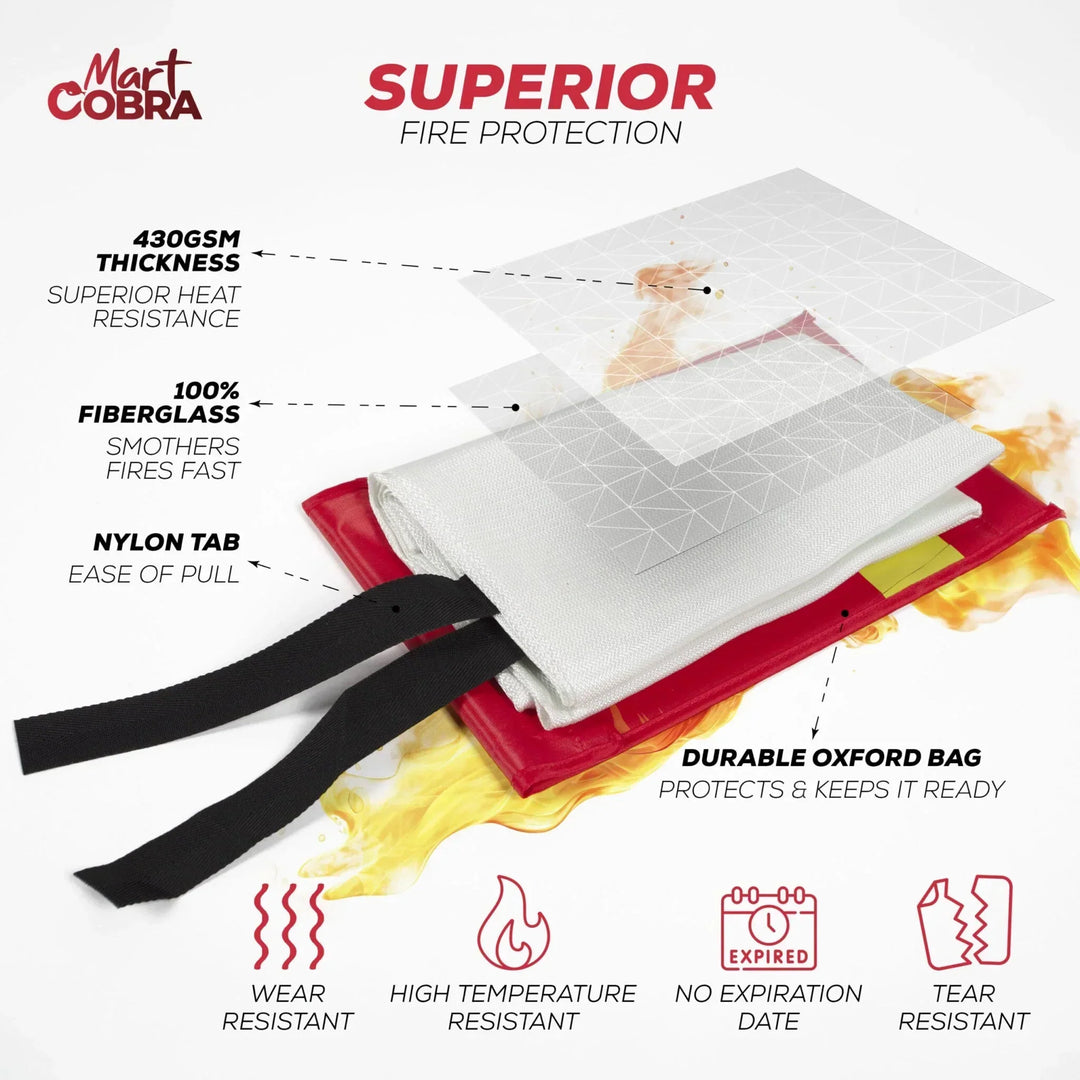Tips for Ensuring Fire Safety at Home
Fire safety is a crucial aspect of home maintenance and preparedness that can often be overlooked until it's too late. Understanding and implementing effective fire safety measures can mitigate risks, protect your loved ones, and save your property. With the right equipment and a well-informed plan, you can prepare for emergencies and react swiftly if they occur. This blog will explore the essential tools and strategies to enhance fire safety in your home.
Understanding the Basics of Fire Safety
One of the simplest yet most effective ways to enhance fire safety in your home is by ensuring you have the proper fire emergency supplies. Get the most reliable fire emergency supplies to keep your household prepared. Equip your home with items such as fire blankets, fire extinguishers, and smoke detectors. These tools can help control small fires and alert you early, giving you time to react and evacuate if necessary.
Maintaining these devices is equally important. Regularly check batteries in smoke detectors and ensure fire extinguishers are charged and accessible. Remember, the effectiveness of these tools heavily depends on their functionality at critical times.
Must-Have Fire Emergency Supplies
A comprehensive fire safety setup includes a variety of supplies tailored to different types of emergencies. A fire blanket is an essential tool in this arsenal. Explore our fire blanket options to safely smother flames and prevent oxygen from fueling a fire.
In addition to a fire blanket, consider investing in a fireproof document bag. This product is invaluable for safeguarding important documents, such as birth certificates and insurance papers, which can be critical to recovery after a fire. Look into the Mart Cobra Fireproof Document Bag for a reliable option that offers both fire and water resistance.
Developing a Home Fire Safety Plan
A well-devised plan is crucial for effectively managing a fire emergency. It’s important to create a fire escape plan that details each room's exit routes. Practice this plan regularly with all family members to ensure everyone knows what to do in a crisis. Consider specific needs, such as helping children or the elderly evacuate safely.
Another aspect to consider in your fire safety plan is accounting for utility shut-off. Knowing how to turn off gas, electricity, and water can prevent further hazards during a fire emergency. Regular drills and practical training can reinforce everyone's knowledge and foster a calm environment if an emergency arises.
Additional Tips for Fire Safety
Beyond the essential supplies and strategic planning, there are additional measures to enhance fire safety at home. Regular home inspections can identify and mitigate potential hazards. Look for overloaded electrical outlets, faulty wiring, and flammable materials stored improperly.
Additionally, fire safety extends beyond the home. If you live in an area prone to wildfires, consider additional measures such as fire-resistant landscaping. Keeping your yard and nearby structures free of debris and maintaining proper space between plants and structures can significantly enhance your home's safety.
Why Fire Safety is Critical
The importance of fire safety cannot be overstated, especially in residential areas prone to fires. Education and preparation are fundamental in ensuring the effectiveness of your fire safety plan. Investing in quality tools and strategies not only preserves life and property but also provides peace of mind to households. Visit Mart Cobra for a full range of fire safety products designed to protect your home and family.
FAQs about Fire Safety
1. What is the primary step in fire safety planning?
The initial step involves assessing your home for potential fire hazards and ensuring you have essential safety tools. Creating and practicing a fire escape plan tailored to your home’s structure is also fundamental.
2. How often should fire safety equipment be checked?
Smoke detectors should be tested monthly, and batteries should be changed at least once or twice a year. Fire extinguishers need regular inspections, which involve checking the pressure gauge and ensuring accessibility.
3. What should be included in a basic fire emergency kit?
A basic kit should include items like a fire blanket, a portable fire extinguisher, a flashlight, batteries, and backup communications devices. Consider personalizing your kit to accommodate family needs or specific vulnerabilities.
By understanding the essentials of fire safety, preparing with the right tools, and maintaining a practiced plan, you can significantly decrease the risks associated with home fires. It is always better to be overly prepared than caught off guard. Invest the time now to ensure your home is safe from fire-related dangers, and secure the items necessary for comprehensive emergency preparedness.







